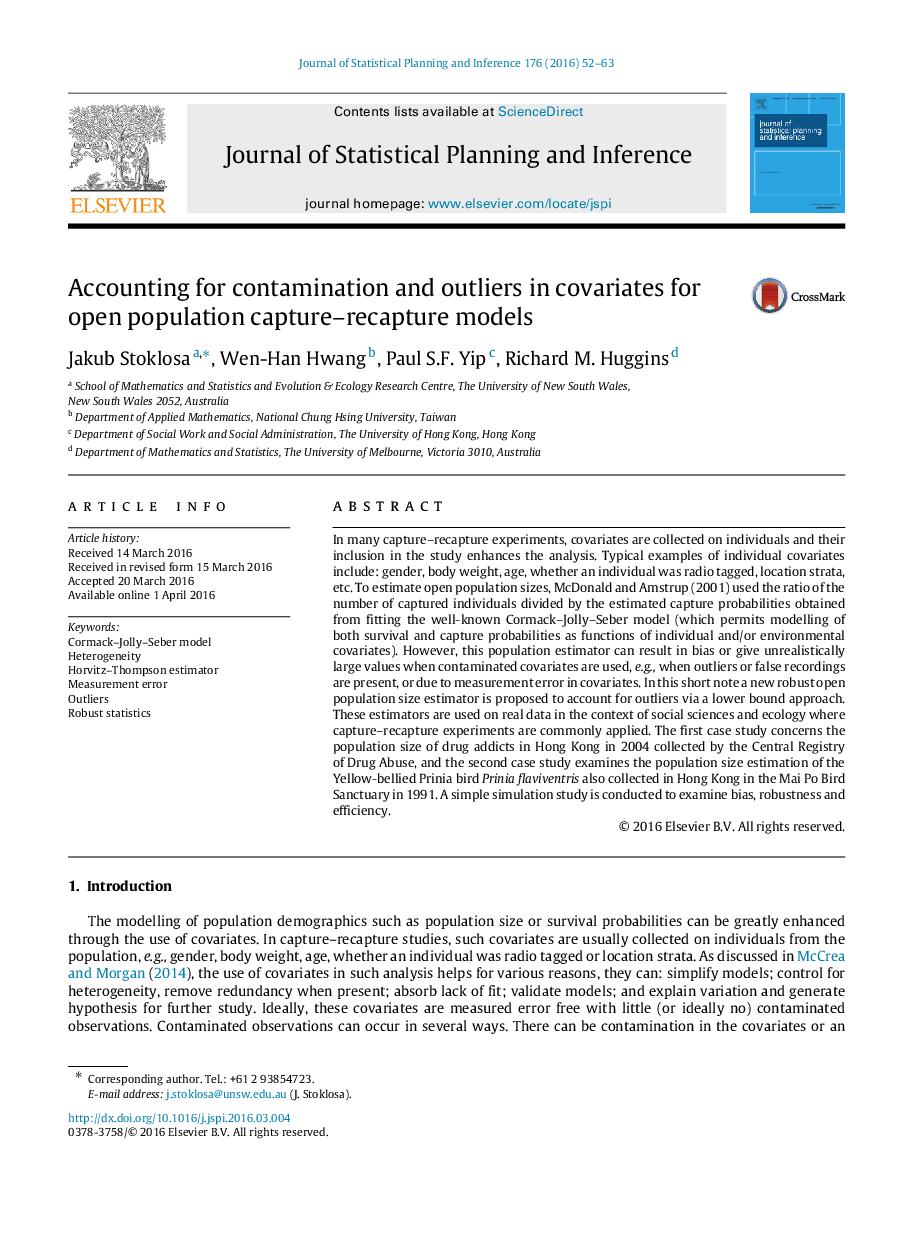| کد مقاله | کد نشریه | سال انتشار | مقاله انگلیسی | نسخه تمام متن |
|---|---|---|---|---|
| 1148410 | 1489747 | 2016 | 12 صفحه PDF | دانلود رایگان |
• Inclusion of covariates in capture–recapture studies can enhance the overall analysis.
• However population size estimates can result in bias if covariates are contaminated.
• A new robust open population size estimator is proposed to account for such outliers.
• These new estimators are used on real data when contamination is present.
• A simulation study is also conducted to examine bias, robustness and efficiency.
In many capture–recapture experiments, covariates are collected on individuals and their inclusion in the study enhances the analysis. Typical examples of individual covariates include: gender, body weight, age, whether an individual was radio tagged, location strata, etc. To estimate open population sizes, McDonald and Amstrup (2001) used the ratio of the number of captured individuals divided by the estimated capture probabilities obtained from fitting the well-known Cormack–Jolly–Seber model (which permits modelling of both survival and capture probabilities as functions of individual and/or environmental covariates). However, this population estimator can result in bias or give unrealistically large values when contaminated covariates are used, e.g., when outliers or false recordings are present, or due to measurement error in covariates. In this short note a new robust open population size estimator is proposed to account for outliers via a lower bound approach. These estimators are used on real data in the context of social sciences and ecology where capture–recapture experiments are commonly applied. The first case study concerns the population size of drug addicts in Hong Kong in 2004 collected by the Central Registry of Drug Abuse, and the second case study examines the population size estimation of the Yellow-bellied Prinia bird Prinia flaviventris also collected in Hong Kong in the Mai Po Bird Sanctuary in 1991. A simple simulation study is conducted to examine bias, robustness and efficiency.
Journal: Journal of Statistical Planning and Inference - Volume 176, September 2016, Pages 52–63
